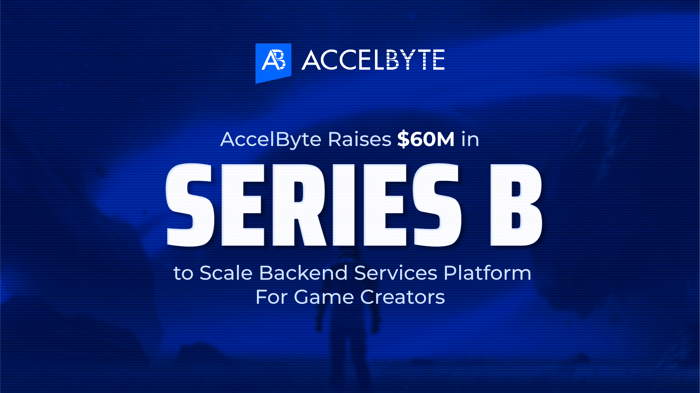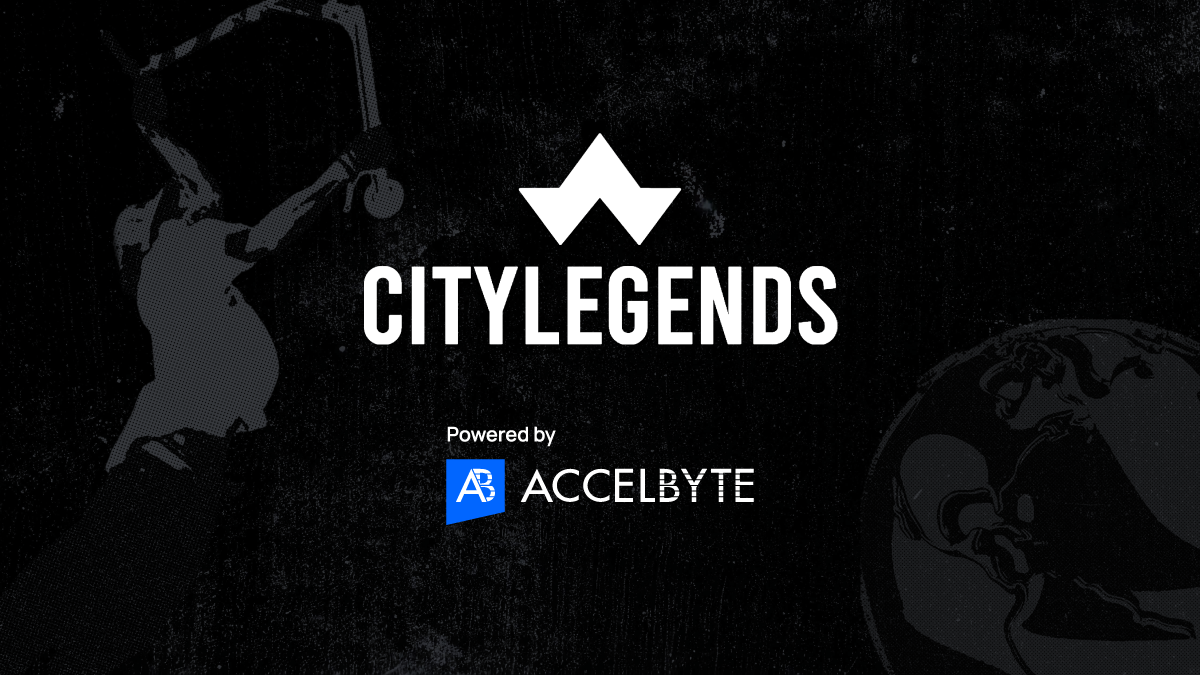Play
Dynamically assemble and match players
Dynamically assemble and match players
Connect cross-platform accounts & identity management
Grow and commercialize your game
Build a vibrant community
Track player progression and game state across platforms
Track, engage, and retain players
Visualize game metrics
Introduction to AccelByte Gaming Services (AGS)
Learn to use AGS with our demo game "Byte Wars"
Connect and get support with other members of the AccelByte Community
Submit and review tickets while directly connecting with AccelByte
Join our Discord for support, insights, and networking!

We recently announced that we closed a Series B round of funding with SoftBank Vision Fund 2 and Sony Interactive Entertainment. Our existing investors Galaxy Interactive and NetEase also returned to participate. We are thankful to be supported by some of the leading minds in gaming, software, and venture capital, and this funding will help accelerate our mission to build a comprehensive, extensible, and scalable backend platform for all game creators.
I am excited as to what lies in front of us and the difficult problems we are helping to tackle with game creators of all sizes. That is what I want to focus on today - to share a little about our challenges and worldview as it informs so much of what we do.
We believe deeply in the critical role the backend will play as games move increasingly towards live services. I have spent 15+ years building teams and shipping large-scale backends at leading gaming studios like Epic Games and EA. My colleagues have not only more years of experience but also 'deeper' experience shipping large backend platforms that power some of the most well-known games.
We have made our share of mistakes and have collectively learned many lessons over that time. Our roots are in gaming and we've all learned from trial and error that gaming presents unique engineering challenges that are different from building an eCommerce marketplace, a social network, or an enterprise application.
One of the hardest problems in building backend tech is that every game is different. A good backend platform must provide a comprehensive, standardized set of features and at the same time - paradoxically - enable game studios with complete control to extend and customize the backend tech to meet their titles' unique requirements. We tackle this challenge head-on in a few ways.
The first step is thoughtful modularization of each service (e.g., matchmaking, player profile, season pass) so that each module can be customized and extended separately. In this way, game developers can zoom in on the functionality most important for them and their game without needing to worry about the ever-increasing complexity of how each module fits in the entire backend platform.
Next is providing options for extending and customizing each module. We support three approaches with increasing levels of complexity: (1) configuration, (2) pluggable code/business logic, and (3) when necessary: forking the module and merging whenever there are new releases.
Lastly, because each game has unique needs and secret sauces, we know that we will not have all the modules and functionalities that our game developers need. So we create server-to-server SDKs for game developers to extend the platform's capabilities. Our server SDKs have more capabilities beyond just a simple wrapper for making API calls, and also need to be accompanied by proper tooling and pipelines so that developers can focus on writing the 'secret sauce' code that matters for the game, and not how to build, test, deploy, and run a custom module.
The second challenge game developers face (probably one of the hardest in my view) is cost. As the list of features grows, online functionalities get more complex, the amount of traffic increases, and so does the cost to operate the backend. Furthermore, the need to deploy multiple sets of backend for different purposes (dev integration, testing, certification, external playtest, beta, and live) means that costs - and time spent by the team - might balloon if not managed properly.
All of this is without touching on multiplayer dedicated servers - the majority of cost behind online multiplayer games. To optimize for cost, backend operators must pick the right instance types that can pack as many game instances as possible while taking into account the length of each game session, number of players, and quality-of-service boundaries. A good profiling tool is important to uncover optimizations for game developers (e.g. shaving 50MB RAM could result in packing 20% more game instances into a particular server). All this is ideally done before the game is shipped - because when the game is live, the race to add features/content and keep players engaged is crucial for the success of the game.
The most important challenge and probably a continuing work in progress for AccelByte is scaling our 300+ product engineering team. We need to continue to grow our product and engineering team, not only to add additional features and capabilities but also to work on a tooling/framework to improve our productivity, while 'polishing' the product as it is being used by our clients. So you can expect us to be more obsessed with details about our products and offerings.
The key characteristic that defines us as a company is teamwork. I've worked with, hired, and built teams that shipped some of the highly scalable and most recognizable products in the industry. One of the most important things I've learned is that teams trump individuals. A rockstar may not always fit a high-performing team, but individuals with humility and the drive to learn and improve themselves and the people around them will not only fit a high-performing team but elevate the team to the next level.
As we move into the next chapter of our growth, we will continue to hire for the team because we believe deeply that a team-first culture, first and foremost, will preserve what got us here and will allow us to tackle the most difficult future problems.
We started the company five years ago with the hope that we could provide a better backend technology platform so that game developers wouldn't need to focus on building and scaling a backend themselves. Unreal Engine and Unity are so powerful and accessible that there's almost no reason for game developers not to use commercially available game engines today. It's our mission to provide game developers with a reliable, scalable, and accessible backend so they can focus on what matters most: making great games.
I have shared three of the important challenges (there are more!) that we are facing. It is critical for us to tackle these and future challenges sustainably. Our clients trust and expect us to continue to deliver features and services for many years down the road as they launch and operate their live games now and in the future. If our mission and challenges excite you, or if you have ideas that we haven't thought about or paid attention to, please reach out or explore our open roles here. We're a remote-friendly company with team members across the globe since our first inception.



Reach out to the AccelByte team to learn more.